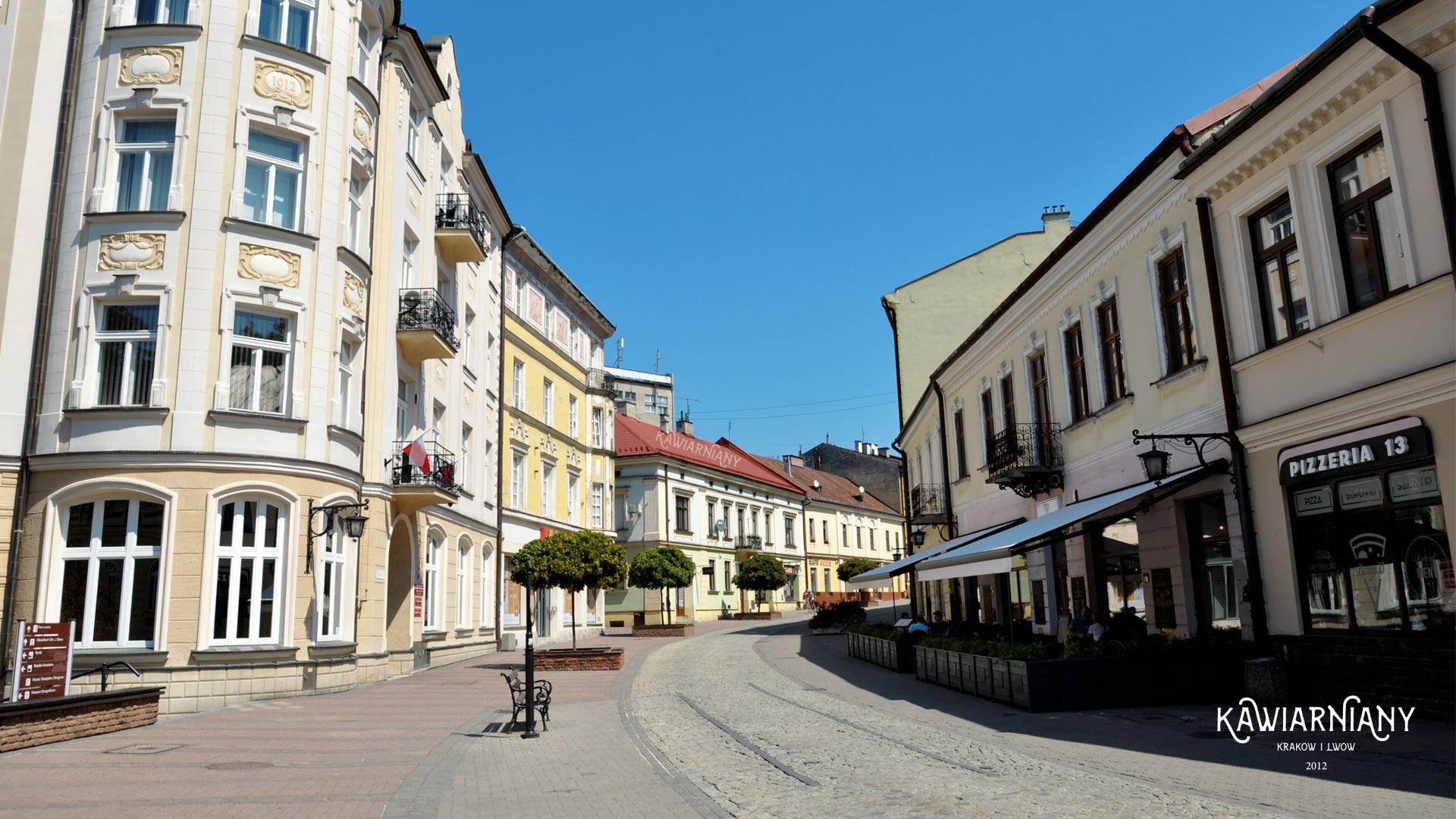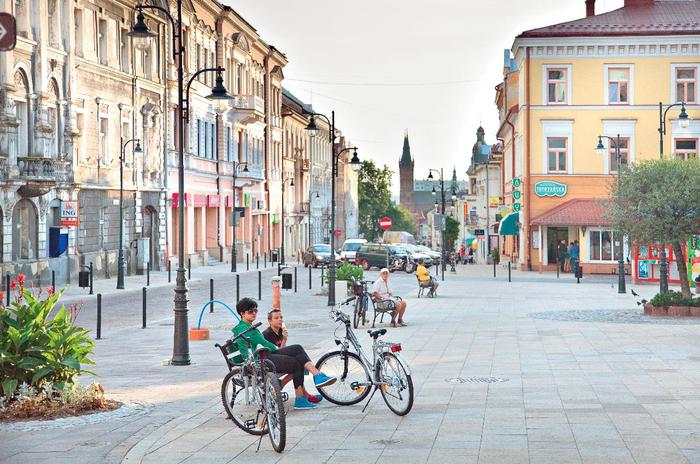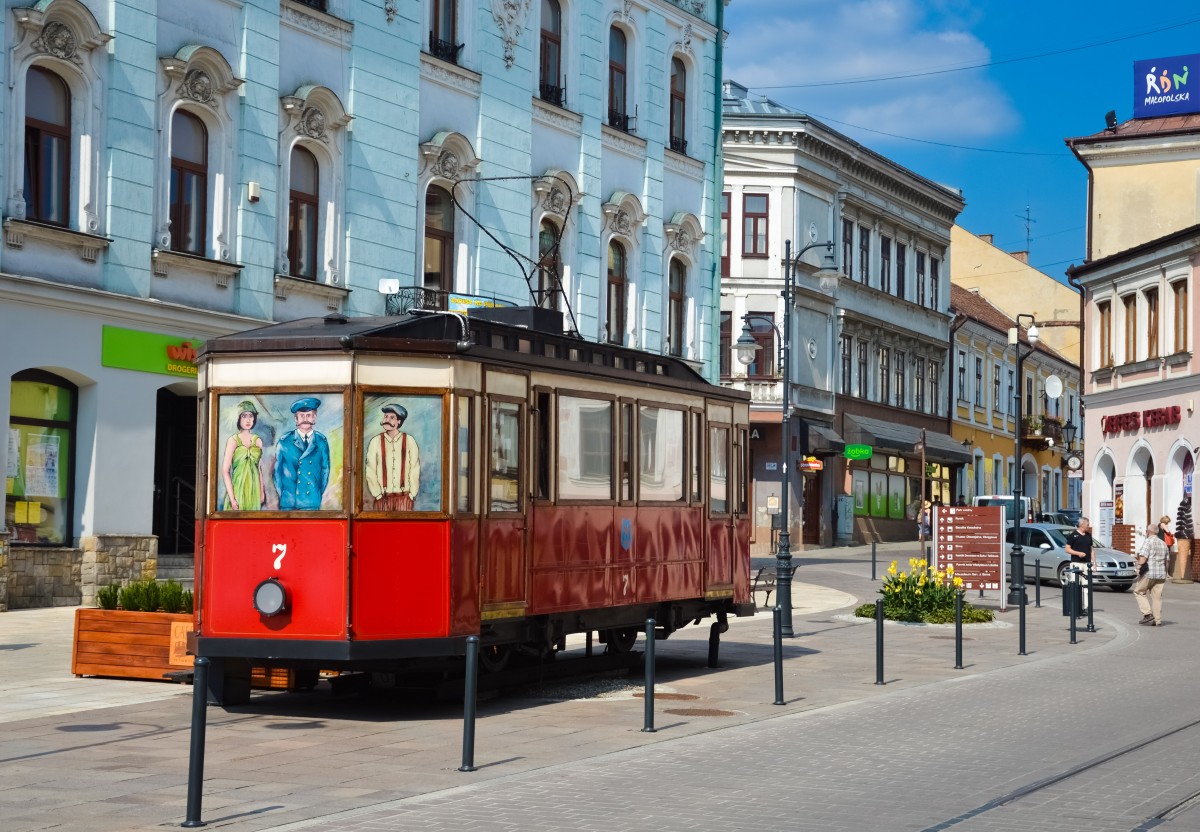Post by Bonobo on Jan 22, 2011 20:48:58 GMT 1
Tarnów (pronounced: Tahr-noof [ˈtarnuf] ( listen)) (German: Tarnau, Ukrainian: Тарнів, Tarniv, Yiddish: טארנא, Torna) is a city in southeastern Poland with 115,341 inhabitants (metro area 312,000 inhabitants) as of June 2009. The city has been situated in the Lesser Poland Voivodeship since 1999, but from 1975 to 1998 it was the capital of the Tarnów Voivodeship. It is a major rail junction, located on the strategic east-west connection from Lviv to Kraków.
en.wikipedia.org/wiki/Tarn%C3%B3w
History
The first recorded mention of Tarnów was in 1125. In 1264 Daniel of Galicia and Bolesław V the Chaste met in the town to establish the borders of their domains. It was granted city rights on March 7, 1330 by Władysław I the Elbow-high. At the time it was owned by Spycimir Leliwita (Leliwa coat of arms). In the 13th century, numerous German settlers immigrated from Kraków and Nowy Sącz. During the 16th century Scottish immigrants began to come in large numbers (Dun, Huyson, and Nikielson). In 1528 the exiled King of Hungary János Szapolyai lived in the town.[1] It was annexed by Habsburg Austria in 1772 during the First Partition of Poland. The Diocese of Tarnów was formed in 1785.
Tarnów Cathedral preserved one of the most beautiful examples of renaissance and mannerist tomb monuments in the country.[2]
February 18, 1846 - beginning of the Galician peasant revolt. The massacre, led by Jakub Szela (born in Smarżowa), is also known as the Galician Massacre, and began on February 18, 1846. This led to the "Galician Slaughter", in which many nobles and their families were murdered by peasants. Szela units surrounded and attacked manor houses and settlements located in three counties - Sanok, Jasło, and Tarnów. The revolt got out of hand and the Austrians had to put it down.
During World War I, the city was one of the focal points of Austro-Hungarian/German Gorlice-Tarnów Offensive of 1915, a military operation that changed the situation in the Eastern Front and resulted in major retreat of opposing Russian forces. After the war, the city became part of a reconstituted Polish state on October 30, 1918.
[edit] The Jews of Tarnów
Before World War II, about 25,000 Jews lived in Tarnów. Jews, whose recorded presence in the town went back to the mid-fifteenth century, comprised about half of the town's total population. A large portion of Jewish business in Tarnów was devoted to garment and hat manufacturing. The Jewish community was ideologically diverse and included both religious Hasidim and secular Zionists.
Immediately following the German occupation of the city on September 8, 1939, the persecution of the Jews began. German units burned down most of the city's synagogues on September 9 and drafted Jews for forced-labor projects. Tarnów was incorporated into the Generalgouvernement. Many Tarnów Jews fled to the east, while a large influx of refugees from elsewhere in occupied Poland continued to increase the town's Jewish population. In early November, the Germans ordered the establishment of a Jewish council (Judenrat) to transmit orders and regulations to the Jewish community. Among the duties of the Jewish council were enforcement of special taxation on the community and providing workers for forced labor.
During 1941, life for the Jews of Tarnów became increasingly precarious. The Germans imposed a large collective fine on the community. Jews were required to hand in their valuables. Roundups for labor became more frequent and killings became more commonplace and arbitrary.
Deportations from Tarnów began in June 1942, when about 13,500 Jews were sent to the Belzec extermination camp. The introductory act of this crime was the so-called "first operation" from 11-19 of June 1942. The Germans gathered thousands of Jews on the Rynek (market place) who were then tortured an killed in a cruel manner. In this time period, on th streets of the town and on the Jewish cemetery about 3,000 persons were shot; in the woods of Zbylitowska Góra a few kilometers away from Tarnów a further 7,000 were murdered.[3] A panel of the Batorego Foundation [4] placed at the entry of the Bimah publishes a document from Michal Borawski, born in 1926, witnessing that the stairsteps (małe schody or little stairs) from the town center to the Bernardynski street where the Bernardine Monastery is located, had to be cleaned of the blood by the local fire brigade during three days.
After the June deportations, the Germans ordered the surviving Jews in Tarnów, along with thousands of Jews from neighboring towns, into a ghetto. The ghetto was surrounded by a high wooden fence. Living conditions in the ghetto were poor, marked by severe food shortages, a lack of sanitary facilities, and a forced-labor regimen in factories and workshops producing goods for the German war industry.
In September 1942, the Germans ordered all ghetto residents to report at Targowica Square, where they were subjected to a "Selektion" (selection) in which those deemed "unessential" were selected out for deportation to Belzec. About 8,000 people were deported. Thereafter, deportations from Tarnów to extermination camps continued sporadically; the Germans deported a group of 2,500 in November 1942.
In the midst of the 1942 deportations, some Jews in Tarnów organized a Jewish resistance movement. Many of the resistance leaders were young Zionists involved in the Hashomer Hatzair youth movement. Many of those who left the ghetto to join the partisans fighting in the forests later fell in battle with SS units. Other resisters sought to establish escape routes to Hungary, but with limited success.
The Germans decided to destroy the Tarnów ghetto in September 1943. The surviving 10,000 Jews were deported, 7,000 of them to Auschwitz and 3,000 to the Plaszow concentration camp in Kraków. In late 1943, Tarnów was declared "free of Jews" (Judenrein). By the end of the war, the overwhelming majority of Tarnów Jews had been murdered by the Germans. Although 700 Jews returned in 1945, some of them soon left the city and headed mostly to Israel.[5]

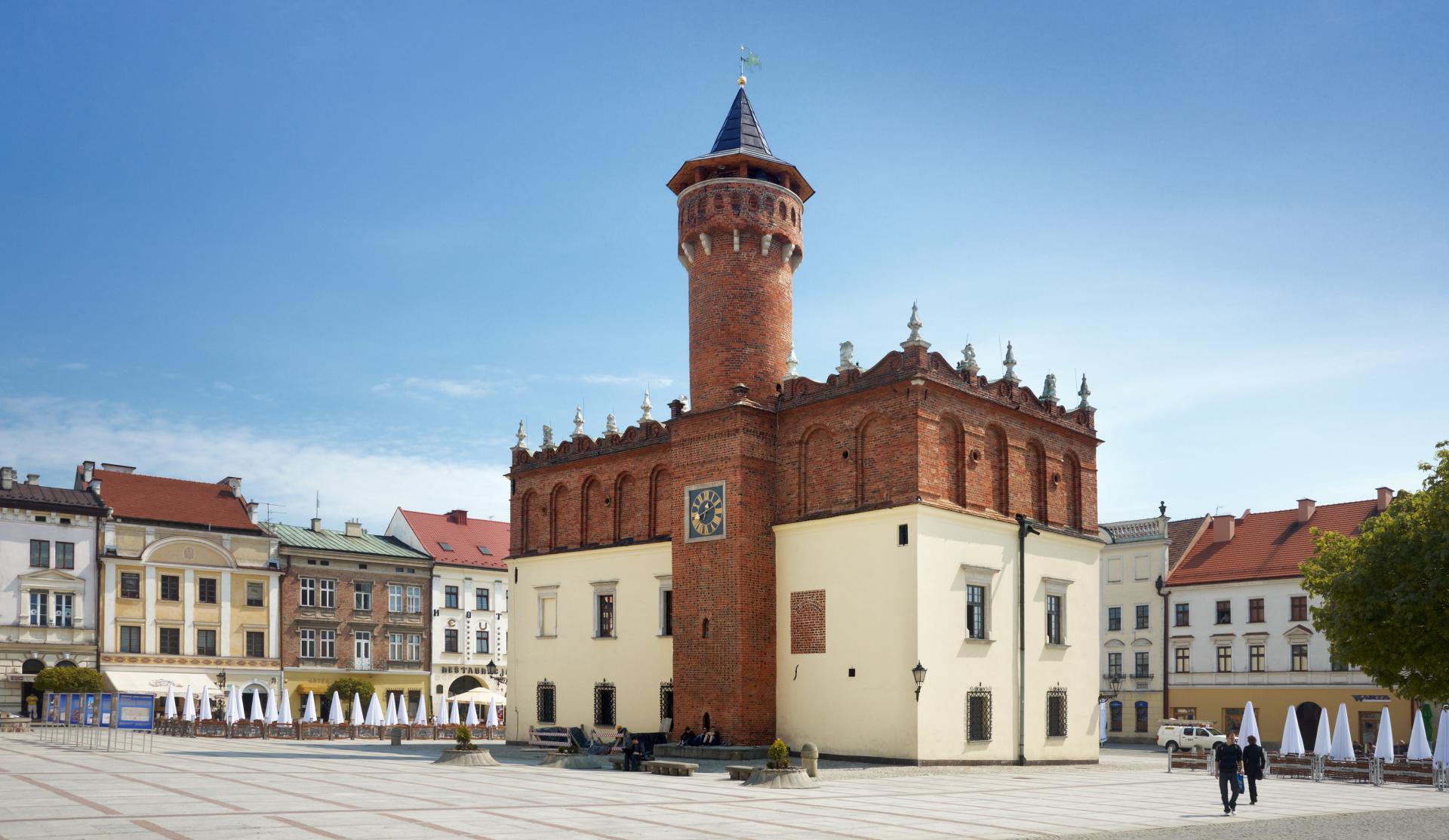
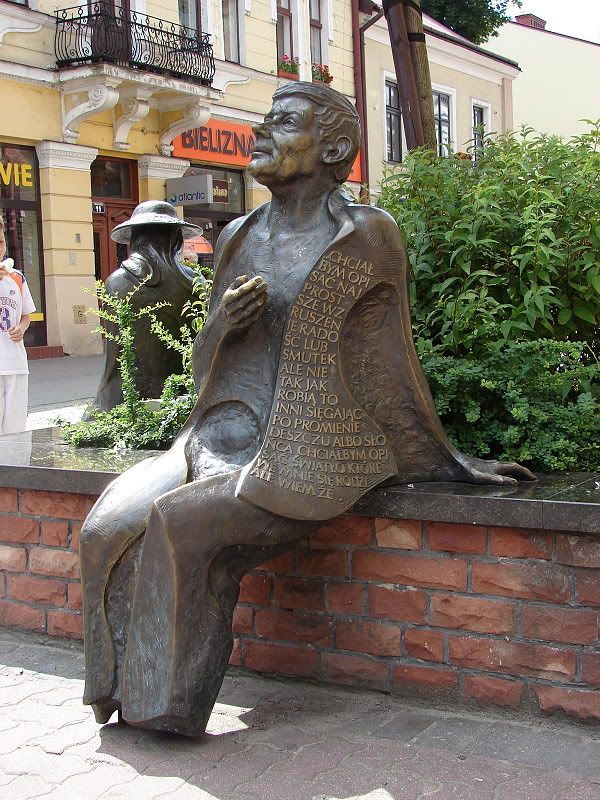
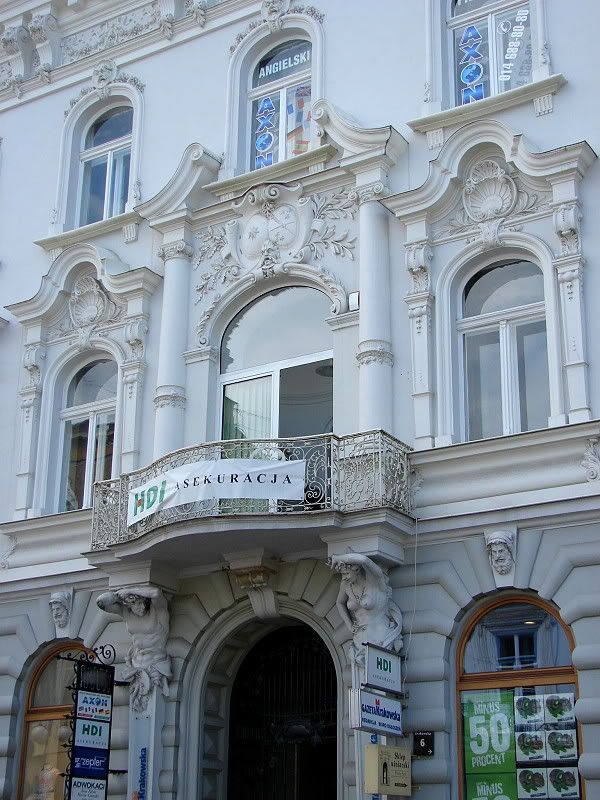
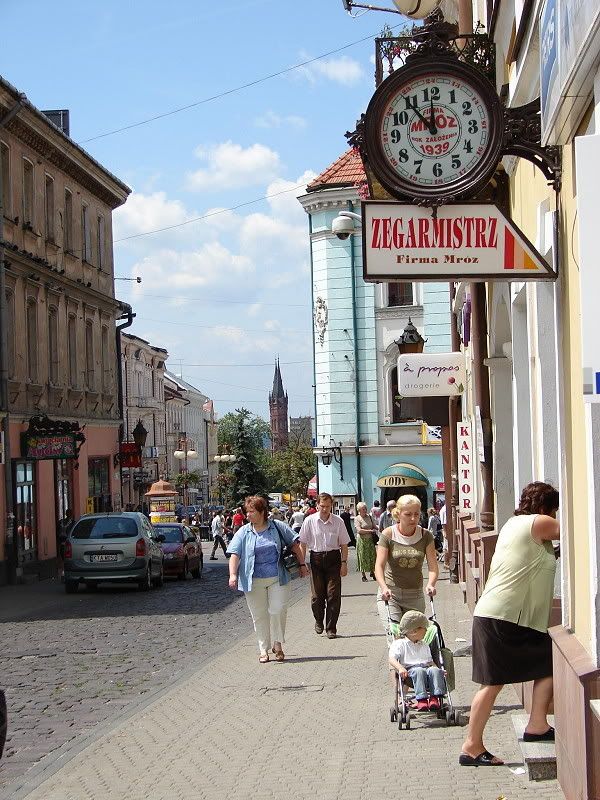

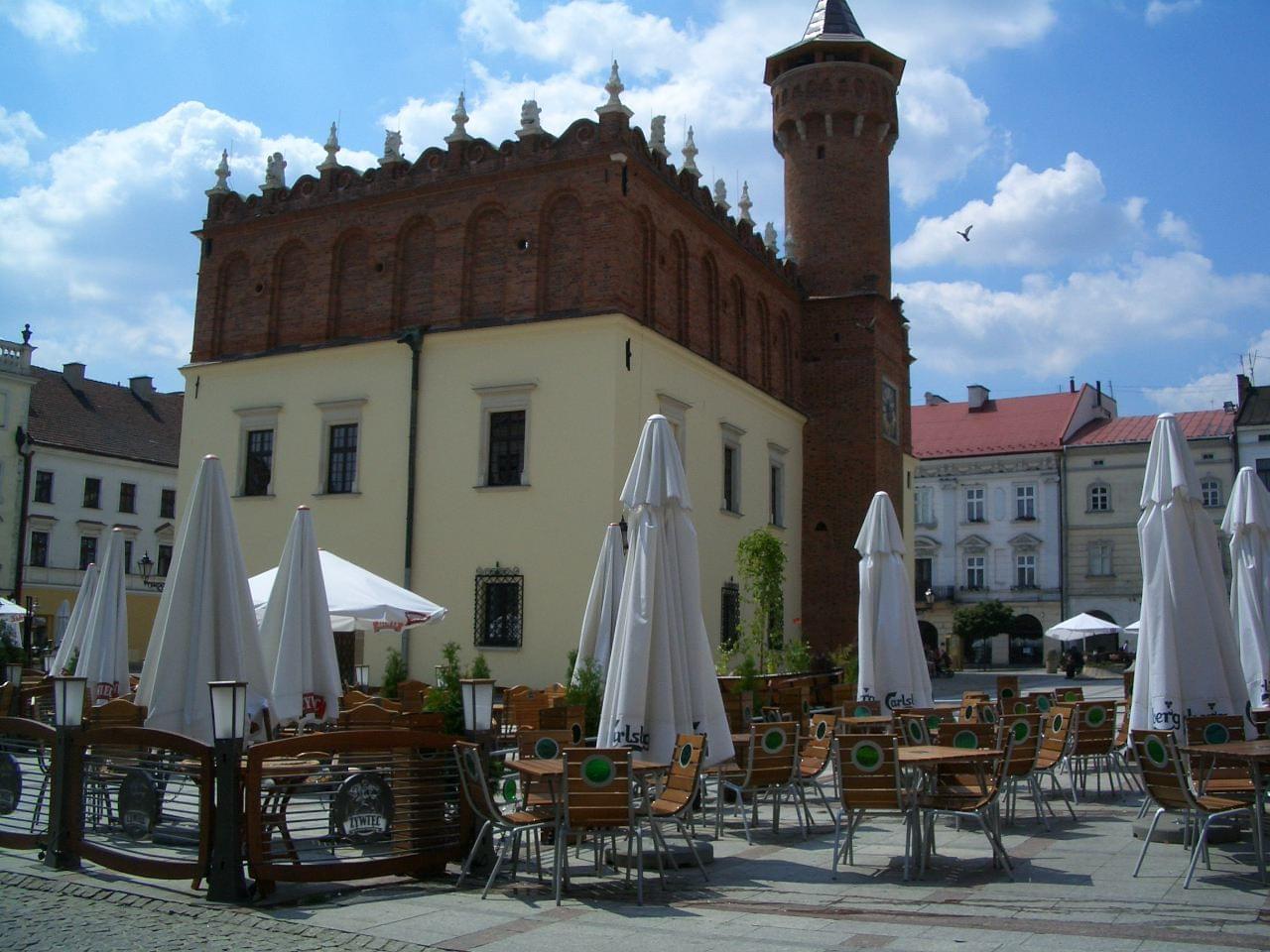
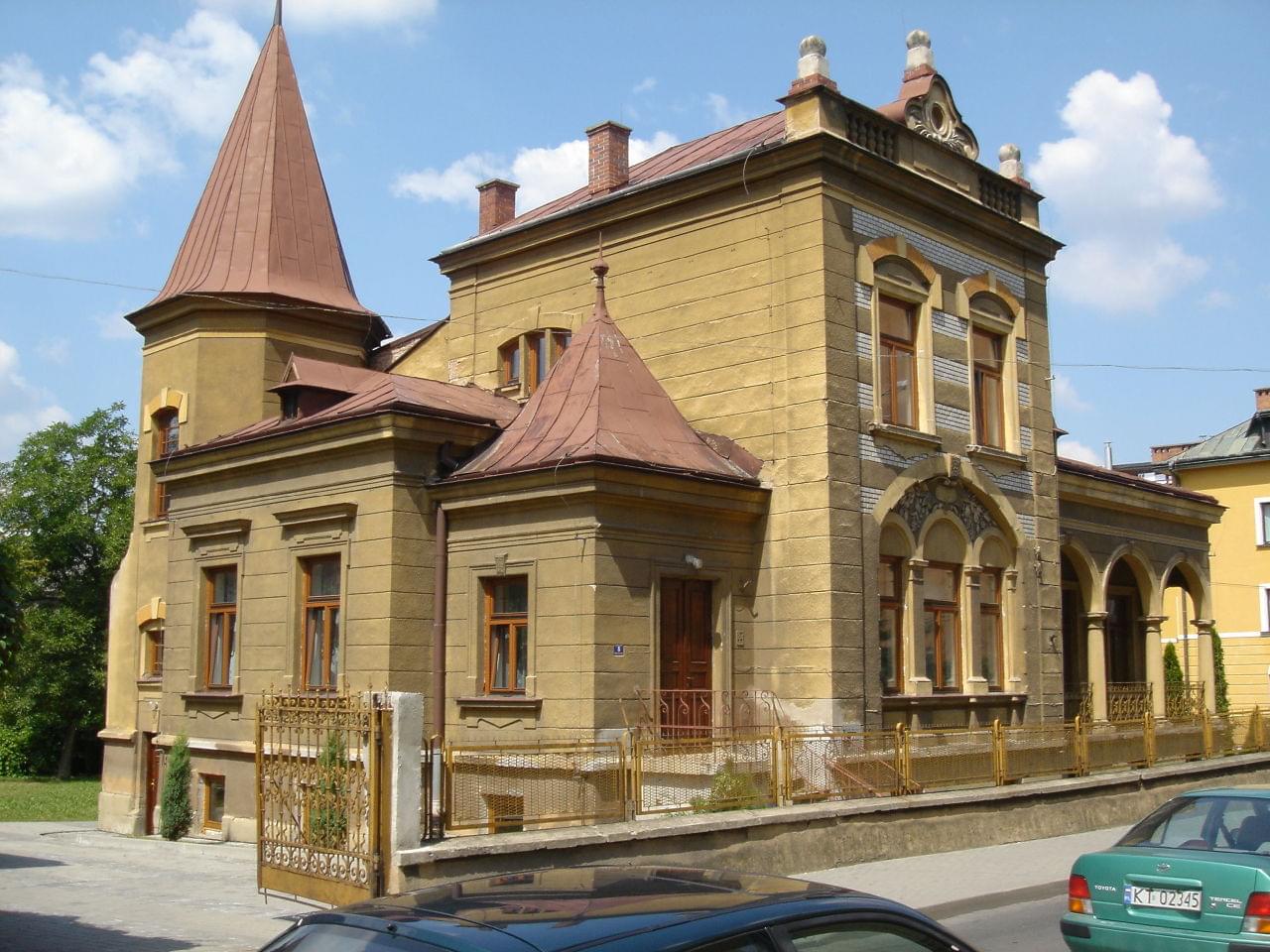
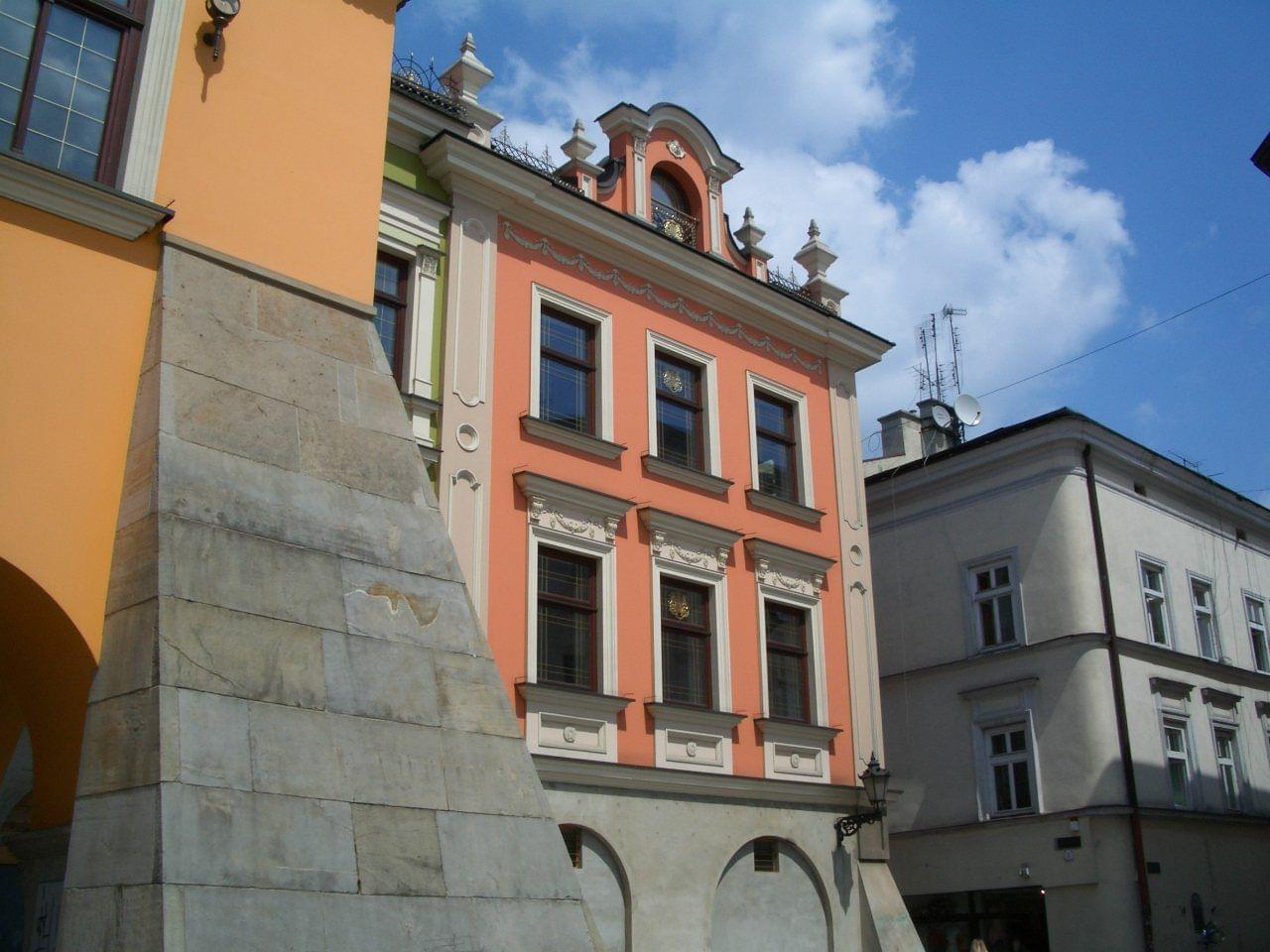

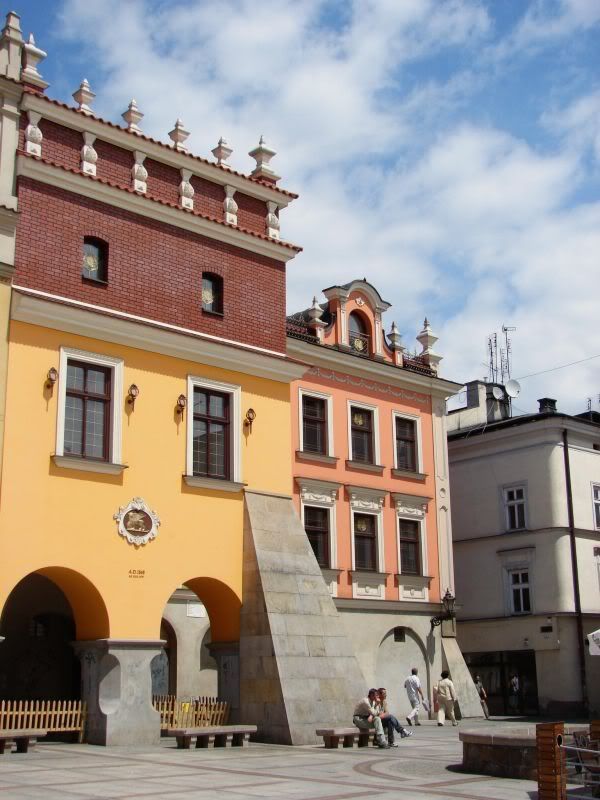
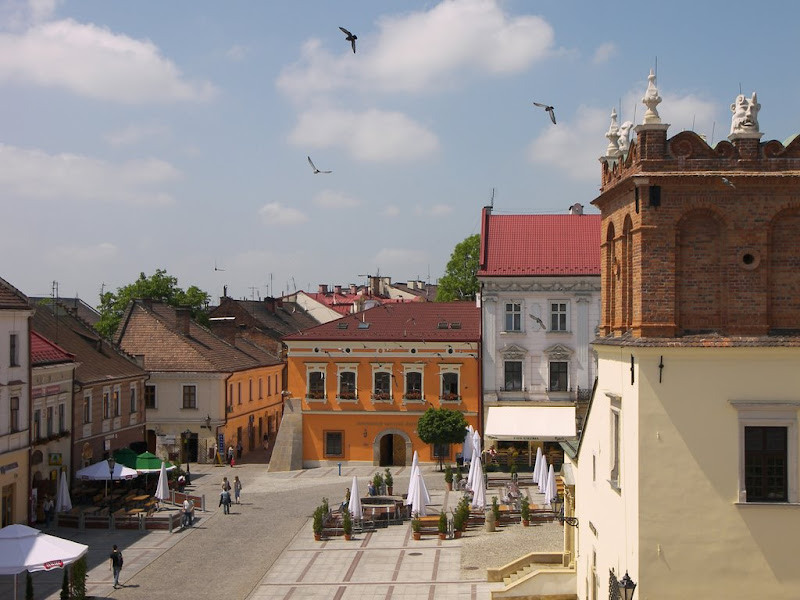
![]()

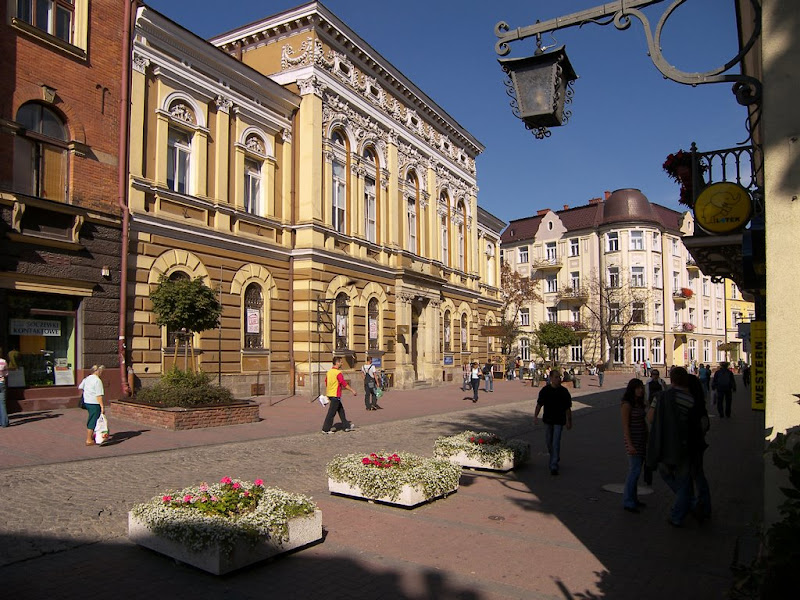
en.wikipedia.org/wiki/Tarn%C3%B3w
History
The first recorded mention of Tarnów was in 1125. In 1264 Daniel of Galicia and Bolesław V the Chaste met in the town to establish the borders of their domains. It was granted city rights on March 7, 1330 by Władysław I the Elbow-high. At the time it was owned by Spycimir Leliwita (Leliwa coat of arms). In the 13th century, numerous German settlers immigrated from Kraków and Nowy Sącz. During the 16th century Scottish immigrants began to come in large numbers (Dun, Huyson, and Nikielson). In 1528 the exiled King of Hungary János Szapolyai lived in the town.[1] It was annexed by Habsburg Austria in 1772 during the First Partition of Poland. The Diocese of Tarnów was formed in 1785.
Tarnów Cathedral preserved one of the most beautiful examples of renaissance and mannerist tomb monuments in the country.[2]
February 18, 1846 - beginning of the Galician peasant revolt. The massacre, led by Jakub Szela (born in Smarżowa), is also known as the Galician Massacre, and began on February 18, 1846. This led to the "Galician Slaughter", in which many nobles and their families were murdered by peasants. Szela units surrounded and attacked manor houses and settlements located in three counties - Sanok, Jasło, and Tarnów. The revolt got out of hand and the Austrians had to put it down.
During World War I, the city was one of the focal points of Austro-Hungarian/German Gorlice-Tarnów Offensive of 1915, a military operation that changed the situation in the Eastern Front and resulted in major retreat of opposing Russian forces. After the war, the city became part of a reconstituted Polish state on October 30, 1918.
[edit] The Jews of Tarnów
Before World War II, about 25,000 Jews lived in Tarnów. Jews, whose recorded presence in the town went back to the mid-fifteenth century, comprised about half of the town's total population. A large portion of Jewish business in Tarnów was devoted to garment and hat manufacturing. The Jewish community was ideologically diverse and included both religious Hasidim and secular Zionists.
Immediately following the German occupation of the city on September 8, 1939, the persecution of the Jews began. German units burned down most of the city's synagogues on September 9 and drafted Jews for forced-labor projects. Tarnów was incorporated into the Generalgouvernement. Many Tarnów Jews fled to the east, while a large influx of refugees from elsewhere in occupied Poland continued to increase the town's Jewish population. In early November, the Germans ordered the establishment of a Jewish council (Judenrat) to transmit orders and regulations to the Jewish community. Among the duties of the Jewish council were enforcement of special taxation on the community and providing workers for forced labor.
During 1941, life for the Jews of Tarnów became increasingly precarious. The Germans imposed a large collective fine on the community. Jews were required to hand in their valuables. Roundups for labor became more frequent and killings became more commonplace and arbitrary.
Deportations from Tarnów began in June 1942, when about 13,500 Jews were sent to the Belzec extermination camp. The introductory act of this crime was the so-called "first operation" from 11-19 of June 1942. The Germans gathered thousands of Jews on the Rynek (market place) who were then tortured an killed in a cruel manner. In this time period, on th streets of the town and on the Jewish cemetery about 3,000 persons were shot; in the woods of Zbylitowska Góra a few kilometers away from Tarnów a further 7,000 were murdered.[3] A panel of the Batorego Foundation [4] placed at the entry of the Bimah publishes a document from Michal Borawski, born in 1926, witnessing that the stairsteps (małe schody or little stairs) from the town center to the Bernardynski street where the Bernardine Monastery is located, had to be cleaned of the blood by the local fire brigade during three days.
After the June deportations, the Germans ordered the surviving Jews in Tarnów, along with thousands of Jews from neighboring towns, into a ghetto. The ghetto was surrounded by a high wooden fence. Living conditions in the ghetto were poor, marked by severe food shortages, a lack of sanitary facilities, and a forced-labor regimen in factories and workshops producing goods for the German war industry.
In September 1942, the Germans ordered all ghetto residents to report at Targowica Square, where they were subjected to a "Selektion" (selection) in which those deemed "unessential" were selected out for deportation to Belzec. About 8,000 people were deported. Thereafter, deportations from Tarnów to extermination camps continued sporadically; the Germans deported a group of 2,500 in November 1942.
In the midst of the 1942 deportations, some Jews in Tarnów organized a Jewish resistance movement. Many of the resistance leaders were young Zionists involved in the Hashomer Hatzair youth movement. Many of those who left the ghetto to join the partisans fighting in the forests later fell in battle with SS units. Other resisters sought to establish escape routes to Hungary, but with limited success.
The Germans decided to destroy the Tarnów ghetto in September 1943. The surviving 10,000 Jews were deported, 7,000 of them to Auschwitz and 3,000 to the Plaszow concentration camp in Kraków. In late 1943, Tarnów was declared "free of Jews" (Judenrein). By the end of the war, the overwhelming majority of Tarnów Jews had been murdered by the Germans. Although 700 Jews returned in 1945, some of them soon left the city and headed mostly to Israel.[5]
























